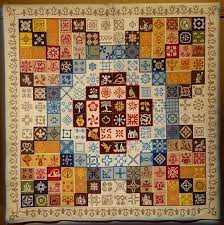Exploring the Basalt Beauty of Waikiki
The Beauty of Basalt in Waikiki
Waikiki, known for its stunning beaches and vibrant atmosphere, is also home to a geological wonder – basalt. Basalt, a type of volcanic rock formed from the rapid cooling of lava, can be found along the shores of Waikiki, adding to the natural beauty of this iconic Hawaiian destination.
Basalt formations in Waikiki exhibit unique textures and colors, ranging from dark gray to black hues. These rocks provide a stark contrast against the white sandy beaches and turquoise waters, creating a visually captivating scene for visitors to admire.
Aside from its aesthetic appeal, basalt also plays a significant role in Hawaii’s geological history. The presence of basalt in Waikiki serves as a reminder of the volcanic origins of the Hawaiian Islands and the powerful forces that have shaped this tropical paradise over millions of years.
Exploring the basalt formations in Waikiki offers visitors a chance to connect with nature and appreciate the intricate beauty of these ancient rocks. Whether you’re strolling along the shoreline or simply taking in the breathtaking views, basalt serves as a reminder of Hawaii’s rich geological heritage.
Next time you find yourself in Waikiki, be sure to take a moment to admire the beauty of basalt along the coast. It’s not just a rock – it’s a symbol of Hawaii’s volcanic past and an integral part of the island’s natural landscape.
Exploring the Unique Beauty and Significance of Basalt in Waikiki
- Stunning natural beauty
- Unique basalt formations
- Contrast against white sandy beaches
- Adds to Waikiki’s iconic scenery
- Reflects Hawaii’s volcanic origins
- Opportunity for geological exploration
- Visually captivating landscapes
- Rich in history and significance
- Enhances the overall experience of Waikiki
Challenges and Hazards of Basalt Formations at Waikiki: What Visitors Need to Know
- Uneven surfaces of basalt rocks can be challenging to walk on, posing a tripping hazard for visitors.
- Basalt rocks can retain heat from the sun, making them hot to the touch and uncomfortable for bare feet.
- Sharp edges and protrusions on basalt rocks may cause injuries if not approached with caution.
- Limited accessibility to certain areas with basalt formations may restrict visitors with mobility issues from fully experiencing the sights.
- Presence of basalt rocks along the shoreline can make swimming or water activities near those areas potentially hazardous.
Stunning natural beauty
The stunning natural beauty of basalt formations in Waikiki adds a captivating element to the already picturesque landscape of this Hawaiian paradise. The contrast of the dark, textured basalt against the backdrop of white sandy beaches and crystal-clear waters creates a visually striking scene that enchants visitors and locals alike. The unique beauty of basalt in Waikiki serves as a testament to the island’s rich geological history and further enhances the allure of this tropical destination.
Unique basalt formations
The unique basalt formations found along the shores of Waikiki offer a captivating glimpse into Hawaii’s geological history. These distinct rock structures, with their dark gray to black hues and intricate textures, stand out against the backdrop of white sandy beaches and turquoise waters. Visitors are drawn to the beauty and uniqueness of these basalt formations, which serve as a testament to the volcanic origins of the Hawaiian Islands. Exploring these one-of-a-kind rock formations provides a deeper connection to nature and allows for a greater appreciation of the natural wonders that make Waikiki such a special destination.
Contrast against white sandy beaches
The basalt formations in Waikiki create a striking contrast against the pristine white sandy beaches, enhancing the visual appeal of this iconic Hawaiian destination. The dark gray to black hues of the basalt rocks stand out against the bright backdrop of the beaches, creating a captivating and dramatic scenery that showcases the natural beauty and geological diversity of Waikiki. This contrast not only adds depth and texture to the landscape but also highlights the unique charm and character of this coastal paradise.
Adds to Waikiki’s iconic scenery
Basalt in Waikiki adds to the iconic scenery of this renowned Hawaiian destination, enhancing its natural beauty with its unique textures and colors. The dark gray to black hues of the basalt formations provide a striking contrast against the white sandy beaches and turquoise waters, creating a visually captivating landscape that is instantly recognizable as Waikiki. The presence of basalt not only enriches the aesthetic appeal of the area but also serves as a reminder of Hawaii’s volcanic origins, making it an integral part of Waikiki’s charm and allure.
Reflects Hawaii’s volcanic origins
Basalt formations in Waikiki serve as a striking reminder of Hawaii’s volcanic origins. These rocks, formed from lava cooling rapidly, showcase the powerful geological forces that have shaped the Hawaiian Islands over millions of years. The presence of basalt along the shores of Waikiki tells a story of the island’s tumultuous past, offering visitors a tangible connection to Hawaii’s volcanic heritage. By reflecting Hawaii’s volcanic origins, basalt in Waikiki adds depth and significance to the natural beauty of this iconic destination.
Opportunity for geological exploration
The basalt formations in Waikiki offer a unique opportunity for geological exploration. Visitors have the chance to study these volcanic rocks up close, observing their textures, colors, and formations. Geological enthusiasts can delve into the history of how these basalt rocks were formed and gain a deeper understanding of the volcanic processes that have shaped the Hawaiian Islands. This hands-on experience allows individuals to appreciate the natural beauty of basalt while learning about the fascinating geology of Waikiki and its significance in Hawaii’s geological landscape.
Visually captivating landscapes
The visually captivating landscapes created by the basalt formations in Waikiki offer a mesmerizing sight for visitors to behold. The stark contrast of the dark gray to black basalt against the backdrop of white sandy beaches and turquoise waters creates a stunning and picturesque scene that showcases the natural beauty of Hawaii. These unique geological features not only add to the aesthetic appeal of Waikiki but also serve as a reminder of the island’s volcanic origins, making them a must-see attraction for those seeking to immerse themselves in the breathtaking landscapes of this tropical paradise.
Rich in history and significance
Basalt in Waikiki is not just a geological marvel; it is rich in history and significance. These ancient volcanic rocks hold stories of Hawaii’s past, serving as a tangible link to the island’s geological evolution. From the fiery origins of volcanic eruptions to the gradual cooling and shaping of basalt formations, each rock carries with it a narrative that speaks to the enduring legacy of Hawaii’s natural landscape. Exploring the basalt in Waikiki offers a unique opportunity to connect with the island’s history and appreciate the profound significance of these enduring geological features.
Enhances the overall experience of Waikiki
The presence of basalt formations along the shores of Waikiki enhances the overall experience of this iconic destination. The unique textures and colors of basalt rocks create a visually captivating contrast against the white sandy beaches and turquoise waters, adding to the natural beauty of Waikiki. Exploring these ancient rocks allows visitors to connect with Hawaii’s geological history and appreciate the island’s volcanic origins. Basalt in Waikiki serves as a reminder of the powerful forces that have shaped this tropical paradise, enriching the experience for those who take the time to admire its beauty.
Uneven surfaces of basalt rocks can be challenging to walk on, posing a tripping hazard for visitors.
The uneven surfaces of basalt rocks in Waikiki can present a challenge for visitors as they navigate the shoreline. These rugged formations, while visually striking, can create tripping hazards for those exploring the area on foot. The jagged edges and varying heights of the basalt rocks require careful attention and sure footing to avoid potential accidents. Visitors are advised to proceed with caution and watch their step while admiring the natural beauty of these rocky formations along the coast of Waikiki.
Basalt rocks can retain heat from the sun, making them hot to the touch and uncomfortable for bare feet.
One downside of basalt rocks in Waikiki is their ability to retain heat from the sun, causing them to become hot to the touch. This can make walking barefoot on these rocks uncomfortable, especially during the peak hours of sunlight. Visitors should exercise caution and consider wearing appropriate footwear when navigating areas with basalt formations to avoid discomfort or potential burns from the heated surfaces.
Sharp edges and protrusions on basalt rocks may cause injuries if not approached with caution.
When exploring the basalt formations in Waikiki, it is important to exercise caution due to the sharp edges and protrusions present on the rocks. These natural features can pose a risk of injury if not approached with care and attention. Visitors should be mindful of their surroundings and watch their step to avoid potential accidents while admiring the beauty of basalt in Waikiki. It is advisable to wear appropriate footwear and proceed with caution when navigating these rocky areas to ensure a safe and enjoyable experience by the shore.
Limited accessibility to certain areas with basalt formations may restrict visitors with mobility issues from fully experiencing the sights.
Limited accessibility to certain areas with basalt formations in Waikiki may pose a challenge for visitors with mobility issues, potentially hindering their ability to fully experience the sights and beauty of these geological wonders. The rugged terrain and uneven surfaces of some basalt formations may make it difficult for individuals with mobility constraints to navigate the area comfortably and safely. As a result, efforts to improve accessibility and provide accommodations for all visitors, regardless of mobility limitations, are essential to ensure that everyone has the opportunity to appreciate the unique allure of basalt in Waikiki.
Presence of basalt rocks along the shoreline can make swimming or water activities near those areas potentially hazardous.
The presence of basalt rocks along the shoreline in Waikiki can pose a safety concern for swimmers and water enthusiasts. The sharp edges and uneven surfaces of basalt rocks can make navigating the waters near these areas risky, increasing the likelihood of injuries or accidents. It is important for visitors to exercise caution and be aware of their surroundings when engaging in water activities near basalt formations to ensure a safe and enjoyable experience in Waikiki.





